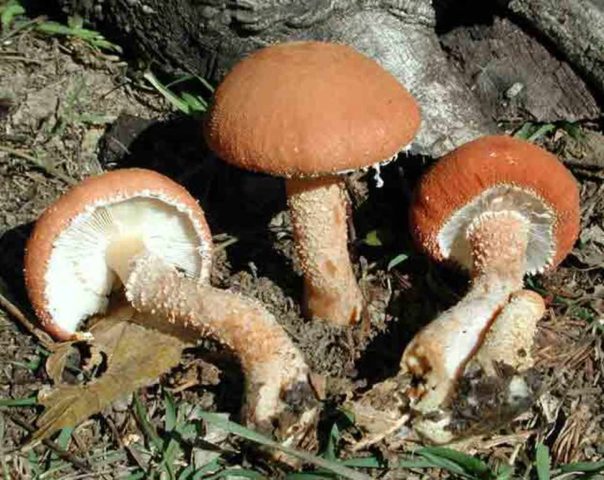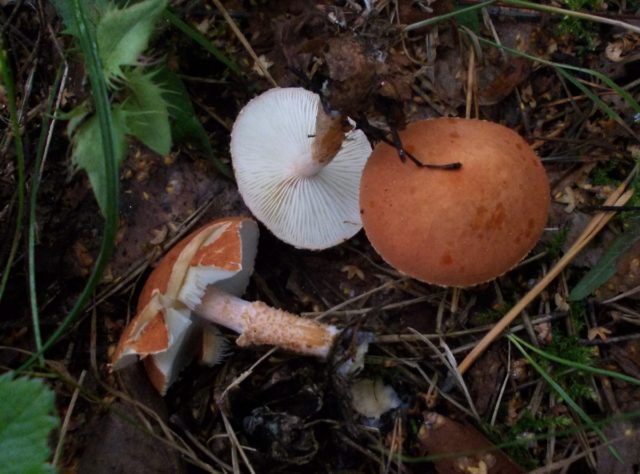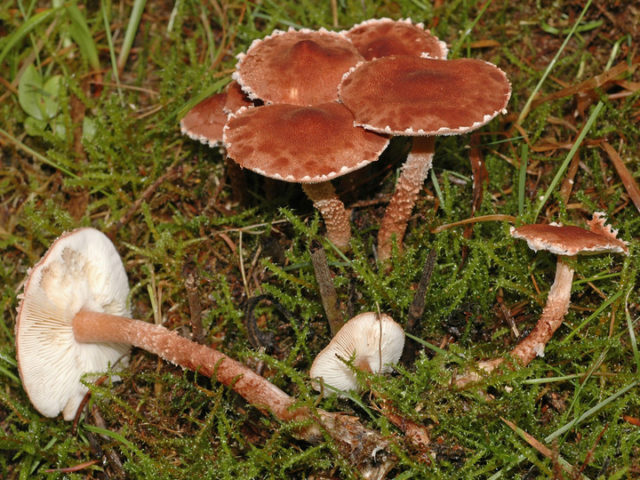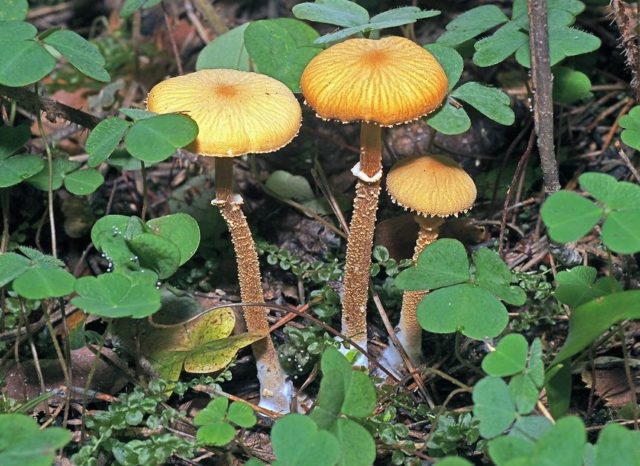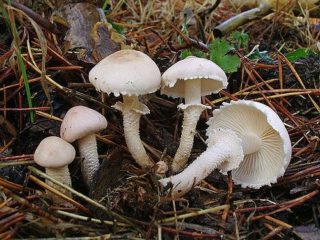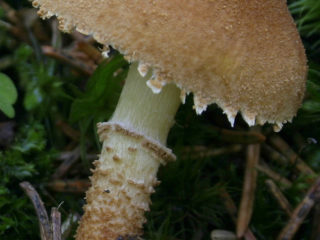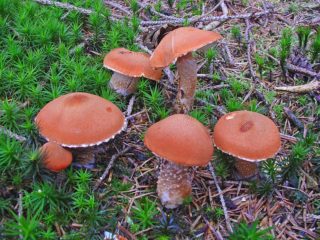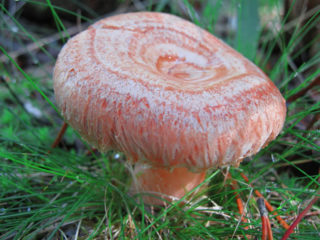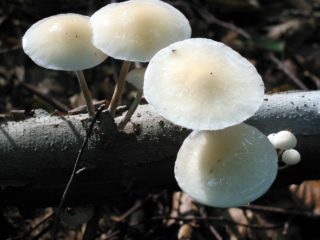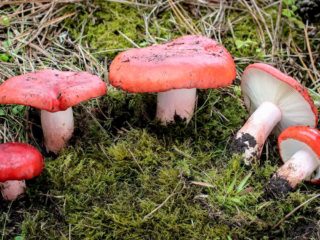Content
Red cystoderm is an edible member of the Champignon family. The species is distinguished by a beautiful red color, prefers to grow from July to September among spruce and deciduous trees. In order not to make a mistake during mushroom hunting and not to put false doubles in the basket, you need to study the external features of the species.
What does red cystoderm look like?
Red cystoderm is a bright, but not often found species of the mushroom kingdom. To recognize it and not be confused with poisonous twins, you need to know the description of the mushroom and carefully read its photo.
Description of the hat
The cap is small, no more than 8 cm in diameter. In young specimens, it has a bell-shaped appearance; in adulthood, it straightens, leaving a small mound in the center. The bright orange surface is adorned with smooth, fine-grained, red scales.
The spore layer is formed by thin frequent plates of whitish or coffee color. The plates are fragile, partially adhered to the stem. The species reproduces by elongated spores.
Leg description
The leg is oblong, up to 5 cm long. Inside, it is hollow and fibrous, thickens downward. The surface is covered with numerous granular scales of pink or light red color. It becomes discolored as it grows older.
Is the mushroom edible or not
This representative is edible, has a whitish pulp with a pleasant mushroom aroma and taste. Before cooking, the collected mushrooms are boiled for several minutes, fried, stewed and canned.
Where and how it grows
Cystoderm prefers to grow among conifers in small families, less often single specimens, in regions with a temperate climate. Begins fruiting from July to early October. Mushroom picking is best done in dry, sunny weather, away from highways and industrial plants.
Doubles and their differences
This representative has similar counterparts. These include:
- Grainy - conditionally edible species with an ovoid brown-orange cap. The pulp is dense, odorless and tasteless. Grows in small families in coniferous forests. Fruiting occurs from August to October.
- Amiantovaya - conditionally edible mushroom with a small convex cap and a long cylindrical stem. The pulp is light, tasteless, but with a slight unpleasant odor. Grows among coniferous and deciduous trees from August to October.
Conclusion
Red cystoderm is an edible representative of the mushroom kingdom. It can often be found in coniferous forests from July to October. Before cooking, the collected mushrooms are thoroughly soaked and boiled. Prepared cystoderms are good fried, stewed and canned. Experienced mushroom pickers advise passing by unknown specimens so as not to harm yourself and your loved ones.
